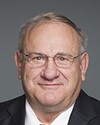Thank you, Madam Chair.
Thank you to all the witnesses for coming out today. The information you have passed on has been very informative.
My question is for Dr. Anna Metaxas.
Just about every group that has come in here has talked about the time it takes for us to reach agreements to establish protected areas, to develop parks, to make changes within our national parks. People have talked about the coordination of multiple layers of government—whether provincial, federal or municipal— with first nations, industry, and community concerns, and the competing interests of different groups. We hear it quite often. One group will say one thing, and the next group that's here with us will say the next thing.
I notice, Dr. Metaxas, that you stated in recommendation number 2, “Counting towards the 10% and beyond”, that it “is very unlikely that Canada will meet the 10% target by 2020” and that the average is seven years to get something done.
Mr. Miller, you followed through on your seventh paragraph: “which can take a considerably longer time to do the necessary analyses and consultation”. Here we are again today, with another group saying exactly the same thing.
In looking at that—and it is a very big concern to me and I think to most of the people here, from watching faces as we hear the evidence—I think there is no one in this room who would say we would ever allow anything to be done without proper consultation and without looking into the scientific aspect and the cultural aspect and everything else, but can you tell me or recommend or suggest some way that we can do it better? How can we make it faster?
We are not going to reach our limits because we need to do the due diligence, but from your perspective, can you give us an idea of how we might be able to do it better or faster?



